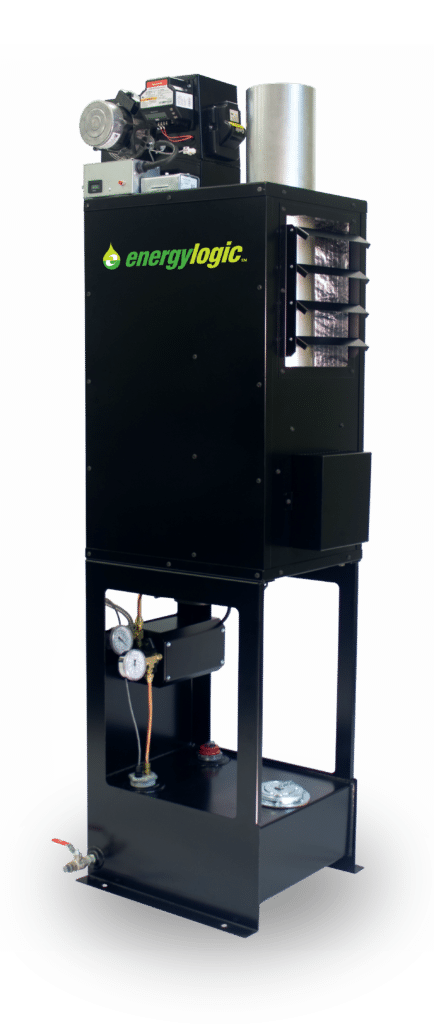Innovations in Waste Oil Heating: What the Future Holds
Waste oil heating is not a novel concept; for decades, individuals and businesses have been recycling used oil to produce heat. As the leading designer and manufacturer of waste oil heating systems in the US, EnergyLogic has been at the forefront of innovations in the waste oil reuse and heating space. From their advanced stainless steel heat exchanger design to an integrated air compressor, EnergyLogic waste oil heaters are always getting new features and technology upgrades.
However, there is always room for improvement, especially as concerns about the environment and energy conservation grow, the drive for more efficient, sustainable, and cleaner ways of converting waste oil into heat has never been stronger. This article sheds light on some exciting innovations in the waste oil heating sector and what we can expect to see in the future.

1. Advanced Burner Technologies
Traditional burners were not always efficient when it came to burning waste oil. In contrast, modern systems come with advanced burners designed specifically for waste oil. These burners produce a cleaner burn, which means fewer emissions and a better utilization of the waste oil’s energy content. EnergyLogic’s patented flame retention head creates a hotter flame than competitor brands for complete fuel combustion and the highest heat output. Less ash is produced, resulting in lower maintenance requirements. This means less impurities are released into the air, resulting in a more efficient heater.
The efficiency of a waste oil heater is also dependent on its heat exchanger design. Advances in engineering have led to the development of heat exchangers that can extract more heat from the combusted gases before they are released into the atmosphere. This translates to better heat transfer to the intended space and less wasted energy.
2. Integration with Smart Technology
Smart homes and factories are the future, and waste oil heaters are not far behind. The next-gen waste oil heating systems are equipped with IoT (Internet of Things) capabilities, allowing users to remotely control and monitor their heaters. This not only brings convenience but also ensures that the heating process is always optimized, leading to energy savings.
One of the challenges with waste oil heaters is the need for regular maintenance to keep them running efficiently. Modern systems come equipped with automated reminders that notify users when maintenance is due, ensuring timely cleaning and servicing. This feature prolongs the life of the heater and ensures efficient operation.

With the integration of artificial intelligence, waste oil heaters will soon be able to self-diagnose problems or inefficiencies in the system. By continuously monitoring various parameters, these heaters can alert users to potential issues before they become major problems, reducing downtime and maintenance costs.
3. Improved Filtration Systems
Before waste oil can be used for heating, it needs to be cleaned of impurities. Innovations in filtration technology have paved the way for more efficient cleaning processes, ensuring that the oil is free from debris and contaminants, which allows for a more efficient burn and prolonged equipment life.
4. Hybrid Systems
Hybrid systems combine waste oil heaters with other renewable energy sources like solar or wind energy or other technology like HVLS (high-volume, low speed) fans. These systems ensure uninterrupted heat supply, even when there’s a shortage of waste oil. Additionally, by using renewable energy, these hybrid systems can further decrease a facility’s carbon footprint.
Of particular importance here is the use of HVLS fans to create a complete heating or cooling system. HVLS fans move large amounts of air and when combined with a waste oil heating system can enhance the effect of heat by redistributing warm air down from the ceiling to the ground where it’s needed most. This is called destratification, and it helps save money in the winter. HVAC systems don’t have to work nearly as hard when pared with a HVLS fan, up to a 30% reduction.
5. Modular Waste Oil Heaters
Instead of a single, large unit, modular waste oil heaters consist of multiple smaller units that can operate independently or together. This design provides scalability, allowing users to add more modules as their needs grow. It also ensures redundancy; if one module fails, the others can continue to operate, ensuring uninterrupted heating. EnergyLogic’s 75H heater was constructed specifically to enhance heating in small spaces. EnergyLogic also provides custom waste oil heating solutions allowing customers to organize heaters, waste oil tanks, boilers, and fans in the configuration that works the best for their space. It’s a unique approach fully supported by EnergyLogic’s team of experts. They’ll help you save money and ensure the comfort of your space.
6. Environmentally Friendly Additives
To optimize the burning process, some additives can be mixed with waste oil. In the future, we can expect a rise in the use of eco-friendly additives that not only enhance burning efficiency but also reduce harmful emissions.

7. Wider Range of Acceptable Oils
As technology improves, waste oil heaters will be designed to accommodate a broader range of oils, including those with varying viscosities or mixed types. This adaptability will allow more businesses and industries to benefit from waste oil heating without the need to pre-process or mix their oils extensively. For instance, EnergyLogic’s waste oil heaters can burn more types of oil than ever before, ranging from 5 weight to 90 weight including synthetics.
Final Thoughts

In the face of a global push for sustainable solutions, waste oil heating presents an excellent opportunity. By tapping into the potential of used oil, we can minimize waste, reduce our reliance on traditional fuels, and limit our carbon emissions. With the innovations mentioned above and many more on the horizon, the future of waste oil heating looks brighter than ever. Whether you’re a business owner, environmentalist, or a homeowner, there’s a lot to be excited about in this space.




